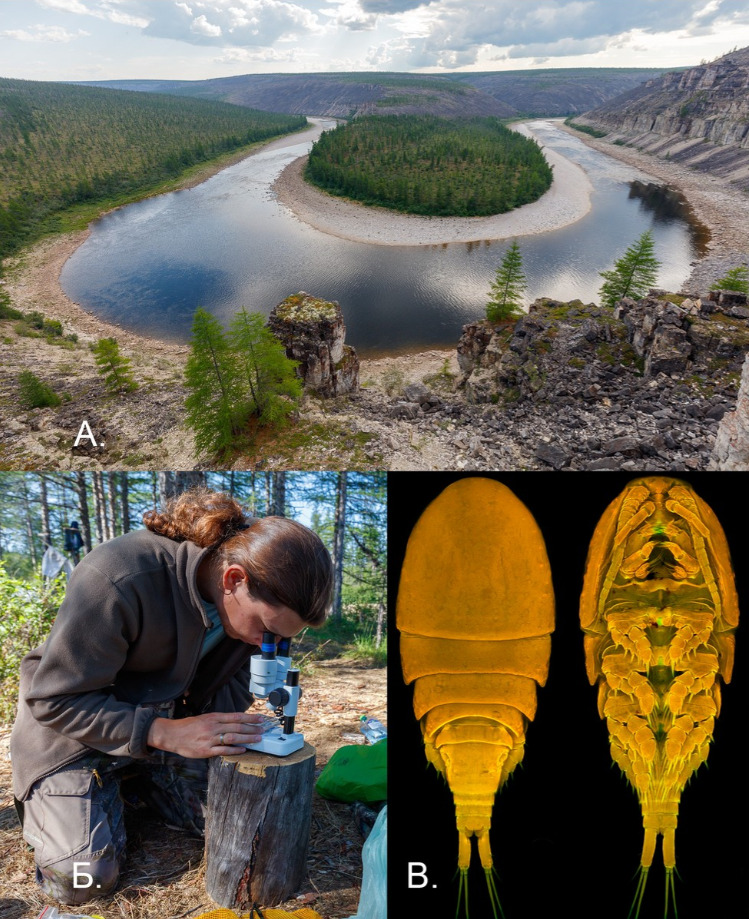
Scientists from the Institute of Ecology and Evolution of the Russian Academy of Sciences (Moscow), together with colleagues from the Kazan Federal University and the Limnological Institute of the Siberian Branch of the Russian Academy of Sciences (Irkutsk), described a species of copepods from the order Cyclopoida (Copepoda) that is new to science.
Diacyclops dyabdar (Novikov, Sharafutdinova, Mayor & Chertoprud, 2024) inhabits flowing water bodies of the Lena River delta and the coast of Tiksi Bay, as well as the Anabar Plateau. The species is named after a creature from the mythology of the Evenks, the indigenous inhabitants of the north of Yakutia and the Krasnoyarsk Territory, to which the known range of the species is currently limited. The fairytale snake Dyabdar lives underground, and with its body makes river beds. This is consistent with the feature of the new Diacyclops, which lives exclusively in rivers and streams, and was only found twice in wet mosses. The described species differs well from the others in its large body size, ornamentation of the swimming legs and caudal branches. The results of molecular genetic analysis for four genes also confirm the specificity of the isolated taxon.
In parallel with the description of the new species, a revision of the species group Diacyclops crassicaudis which it is included in, was carried out. Several taxa of the subspecific and species level were reduced to synonyms, since they did not have significant morphological and morphometric differences from the type representative of the group. The dubious status of two species and two subspecies of Diacyclops previously discovered in Iran is substantiated. It turned out that the descriptions of these taxa were based on immature individuals belonging to several different genera of the order Cyclopoida. Identification of new species from specimens that have not yet reached maturity is, unfortunately, not a rare story for copepods. This is due to the fact that in young individuals both the number of body segments and the structure of the limbs differ significantly from adults. However, sometimes it is quite difficult to accurately determine the molting stage, and with it the age of the crustacean, which leads to errors.
Thus, thanks to research into the aquatic fauna of the Arctic territories, not only was a previously unknown species described, but also order was brought to one of the segments of the extensive genus Diacyclops.
The research was supported by the Russian Science Foundation grant No. 23-24-00054.
Novikov A.A., Sharafutdinova D.N., Mayor T.Y., Chertoprud E.S. 2024. A new species of Diacyclops (Copepoda, Cyclopoida) from the D. crassicaudis (Sars, 1863) species group with critical taxonomy remarks // Diversity. 16, 208. https://doi.org/10.3390/d16040208
Related materials:
PoiskNews: "A new species of copepods has been discovered in Siberia. Ecological indicators of water bodies"
Rambler. News: "Biologists have found a new species of copepods in Siberian streams"
RSF: "Biologists have found a new species of copepods in Siberian streams"
Mail.VFocus: "Biologists have found a new species of copepods in Siberian streams"
Indicator: "Biologists have found a new species of copepods in Siberian streams"
Scientific Russia: "A new species of copepods was found in Siberian streams"
